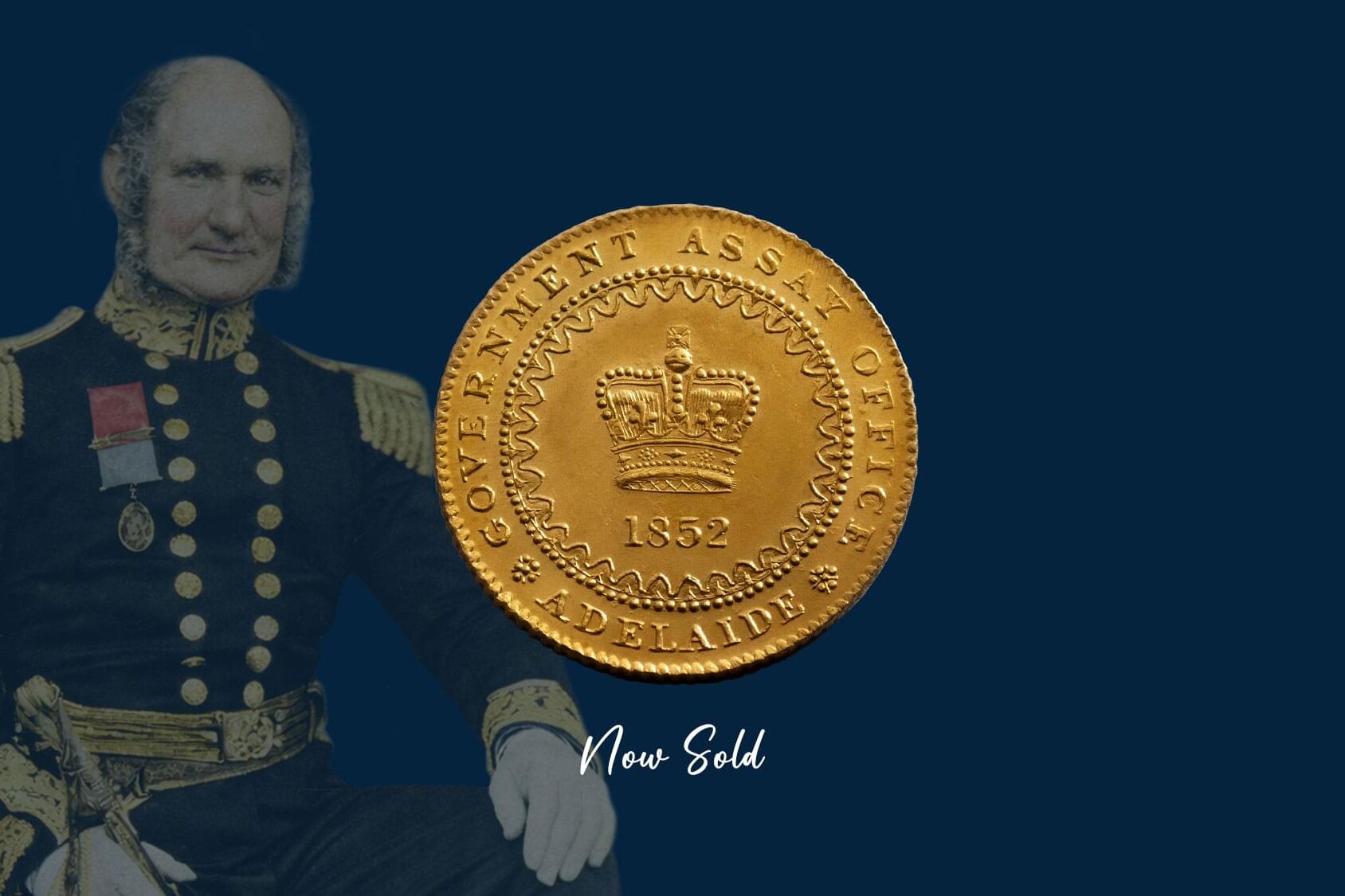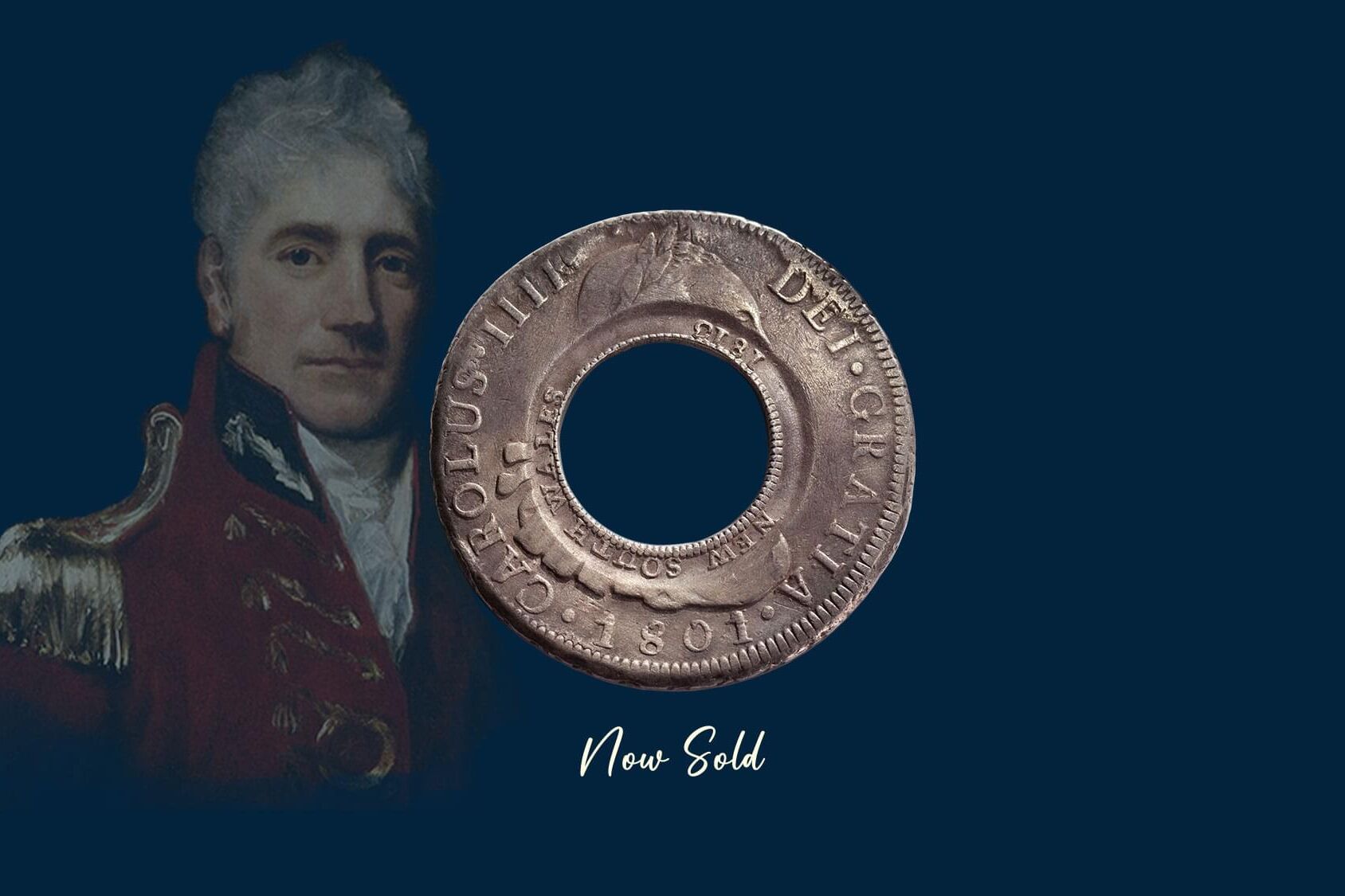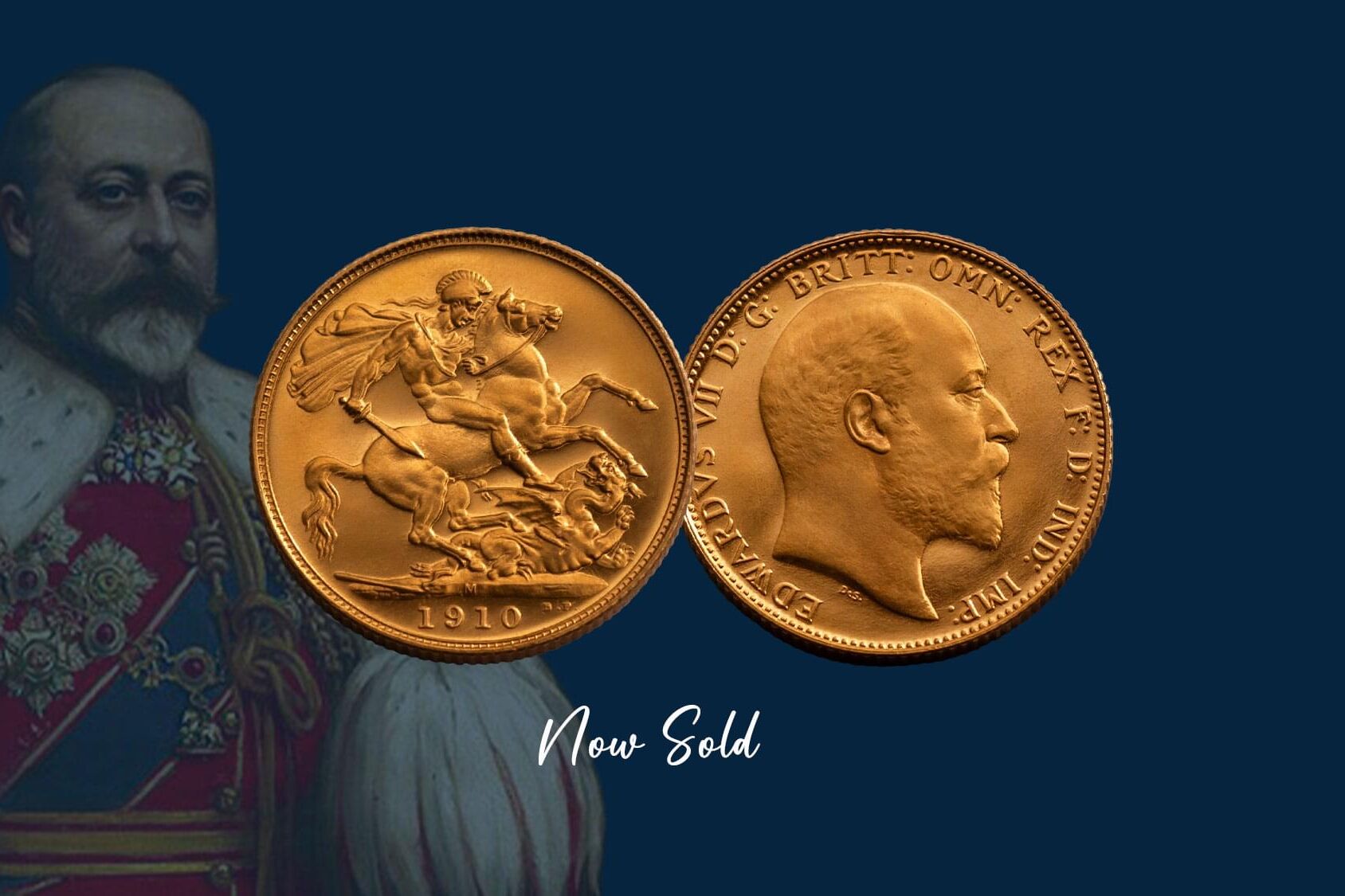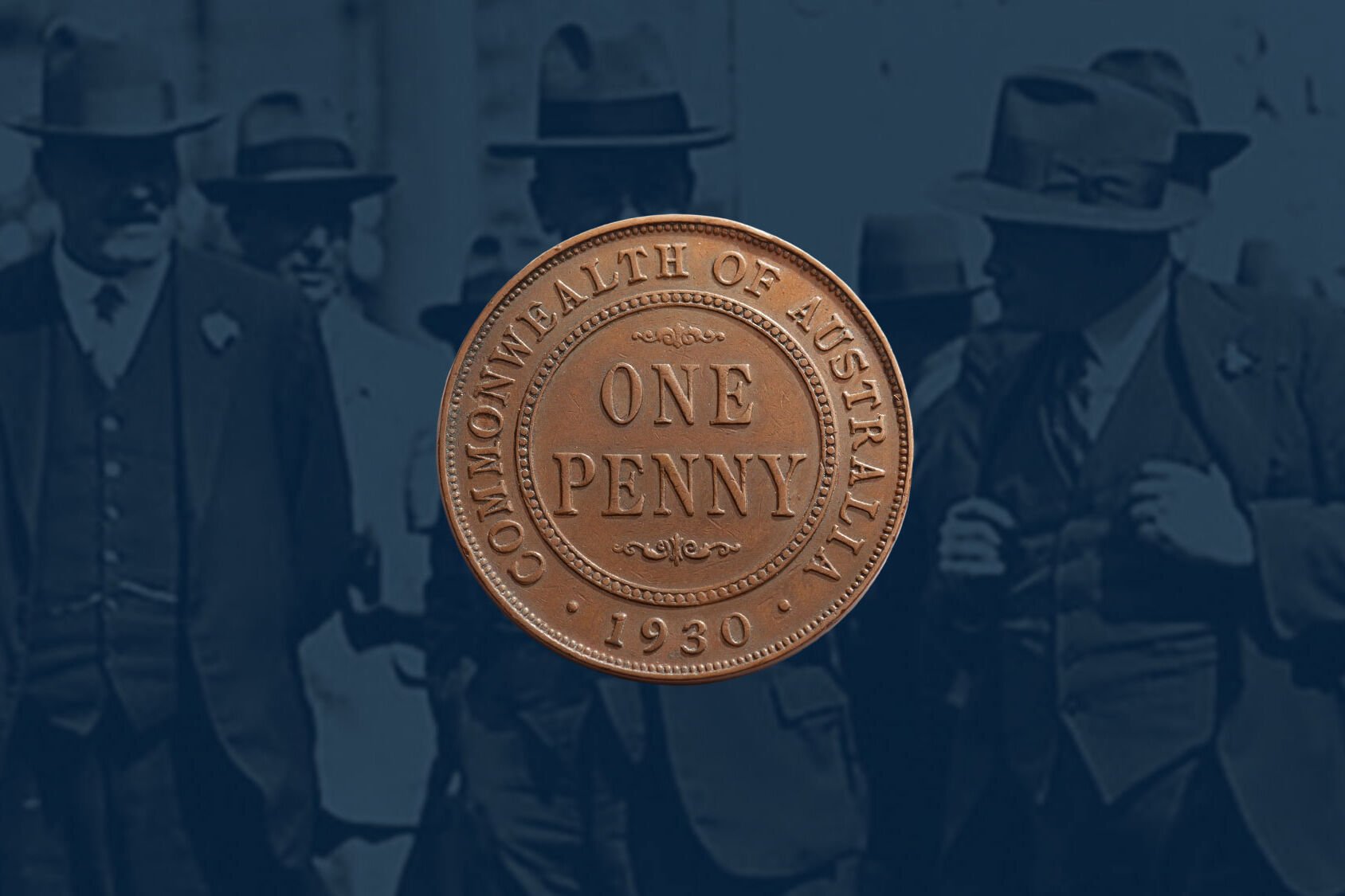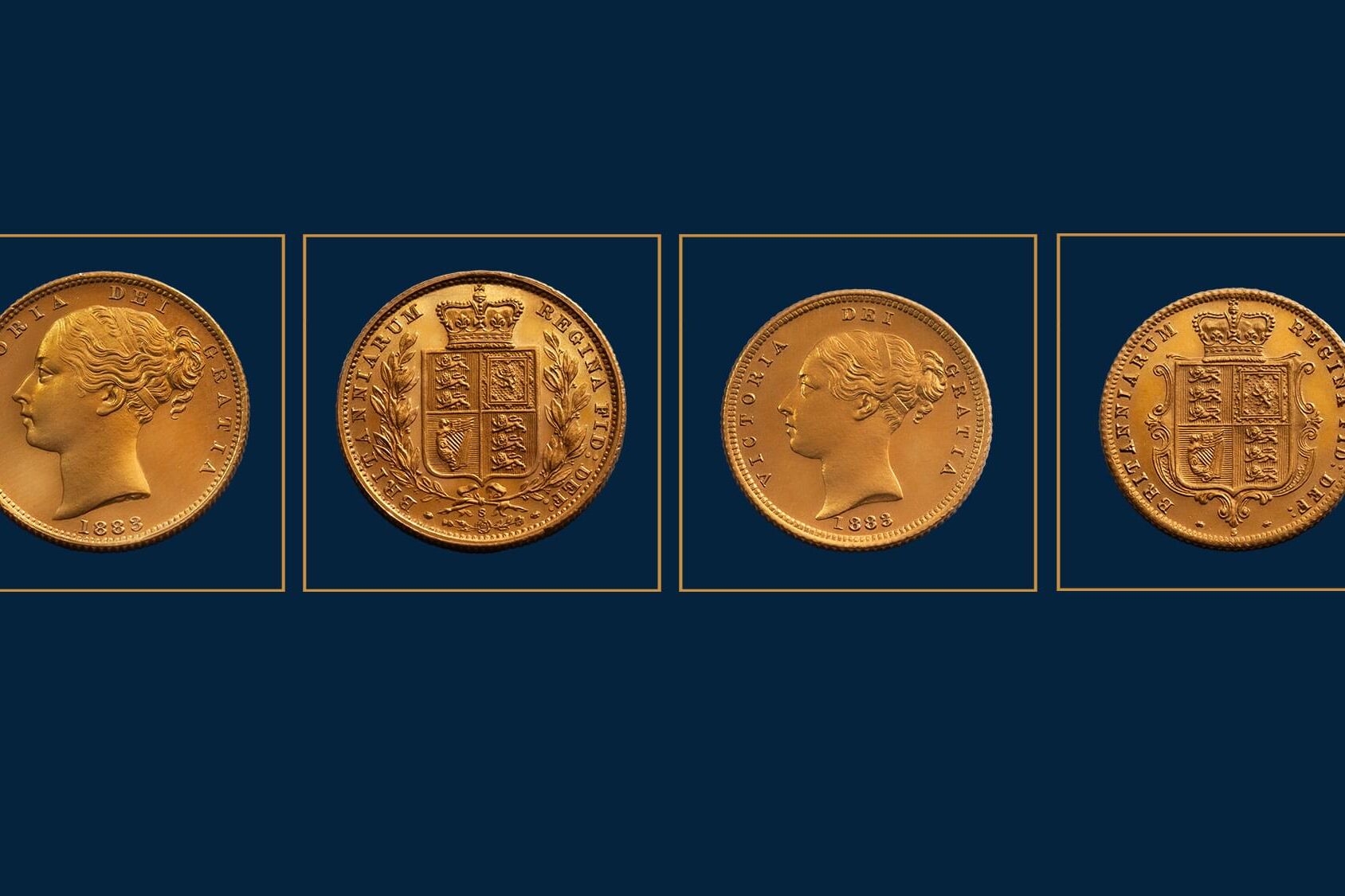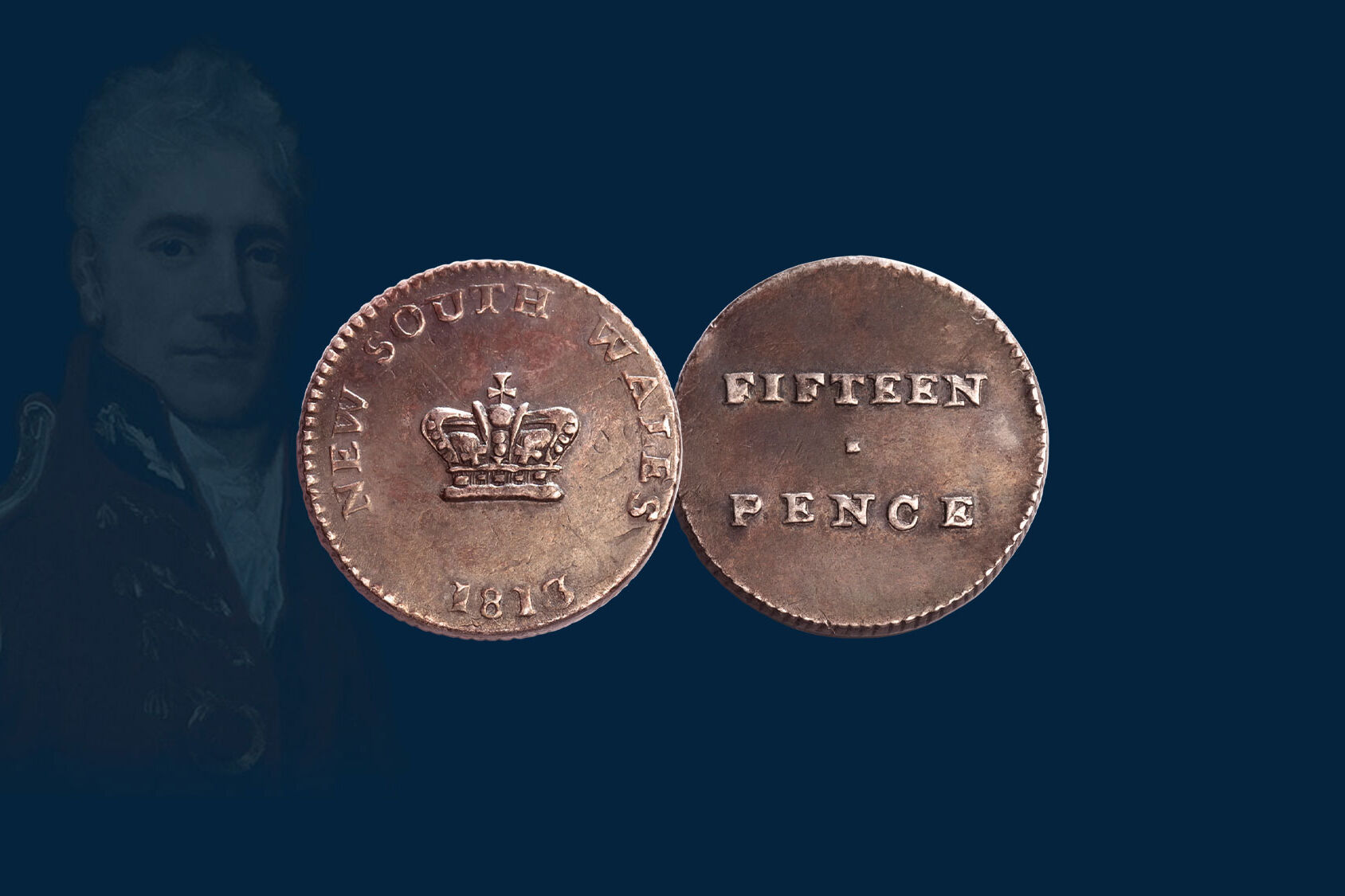The 1927 Canberra Florin is one of Australia's most recognised pre-decimal coins and a treasured keepsake. Two million coins were issued and circulated. Four hundred were struck to a proof finish.
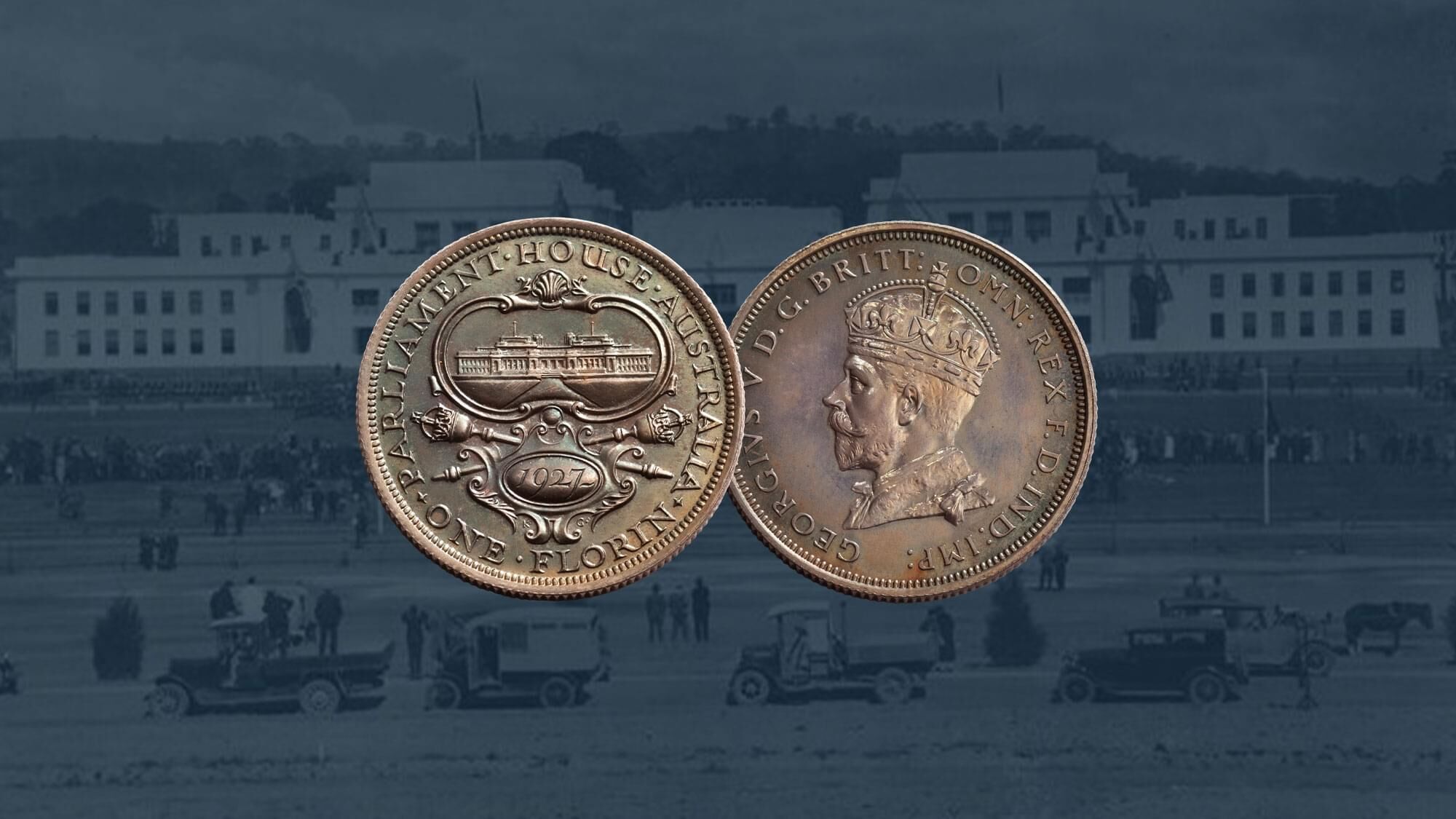
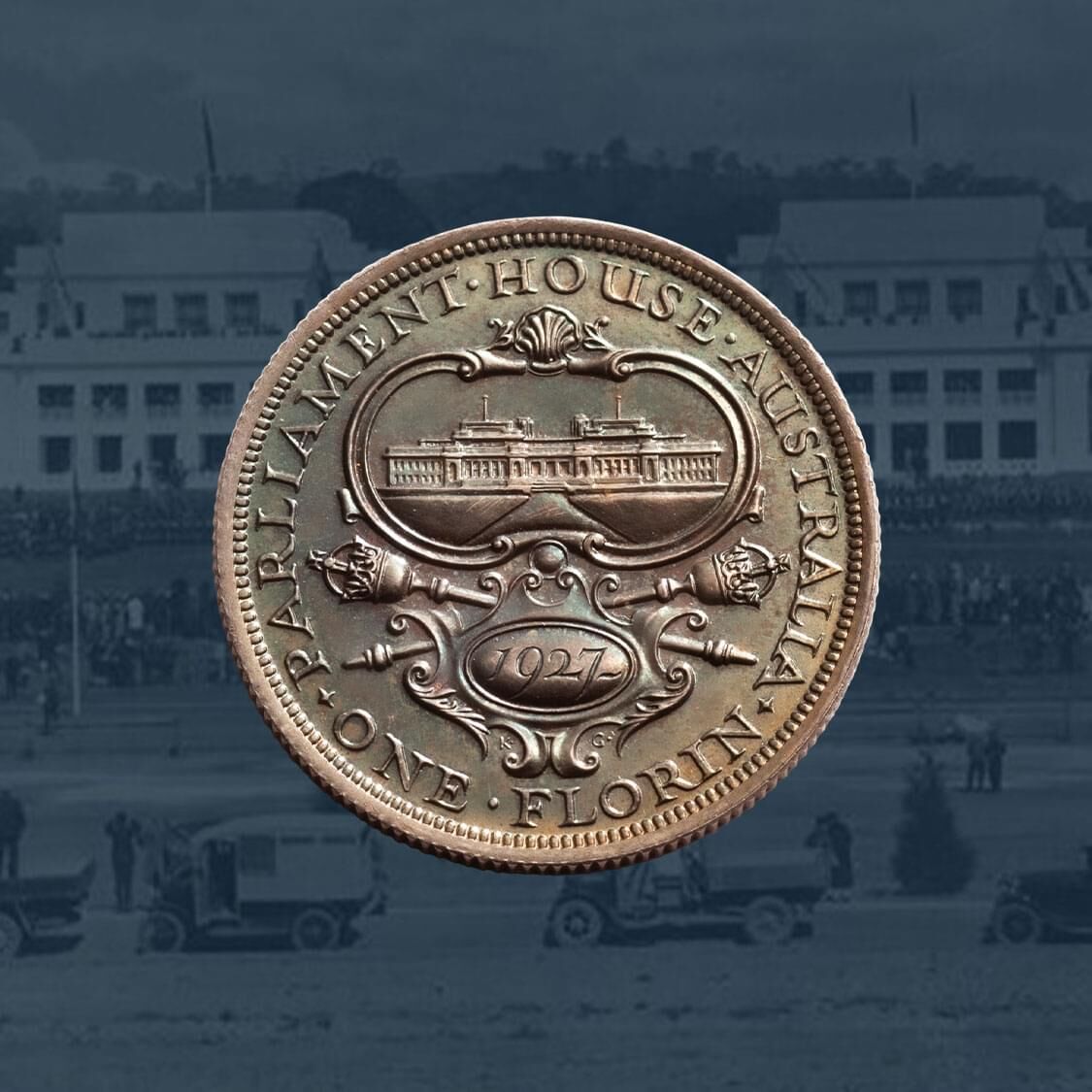
The mystery of the Canberra PROOF Florin. We answer the questions.
So often we hear … “I have just been told that my Canberra Florin is worth $20. And yet you have one on the site that, looks the same, but is valued at $25,000. What gives?”
The 1927 Canberra Florin, depicting ‘Old Parliament House’ is one of Australia's most recognised pre-decimal coins and a treasured keepsake of countless Australian families. It also is a firm favourite with today's coin collectors and the expectation is that it is worth hundreds maybe even thousands of dollars.
And the expectation for a high value is fuelled once readers view the Coinworks website.
The coin on the Coinworks web site is a 1927 PROOF Canberra Florin. And the inclusion of the word ‘PROOF’ is defining and makes all the difference as far as value is concerned.
So, what does ‘PROOF’ mean and how do I tell if my coin is a ‘PROOF’? Why are they so valuable? And are PROOF Canberra Florins worth owning?
Four questions that we answer in this article.
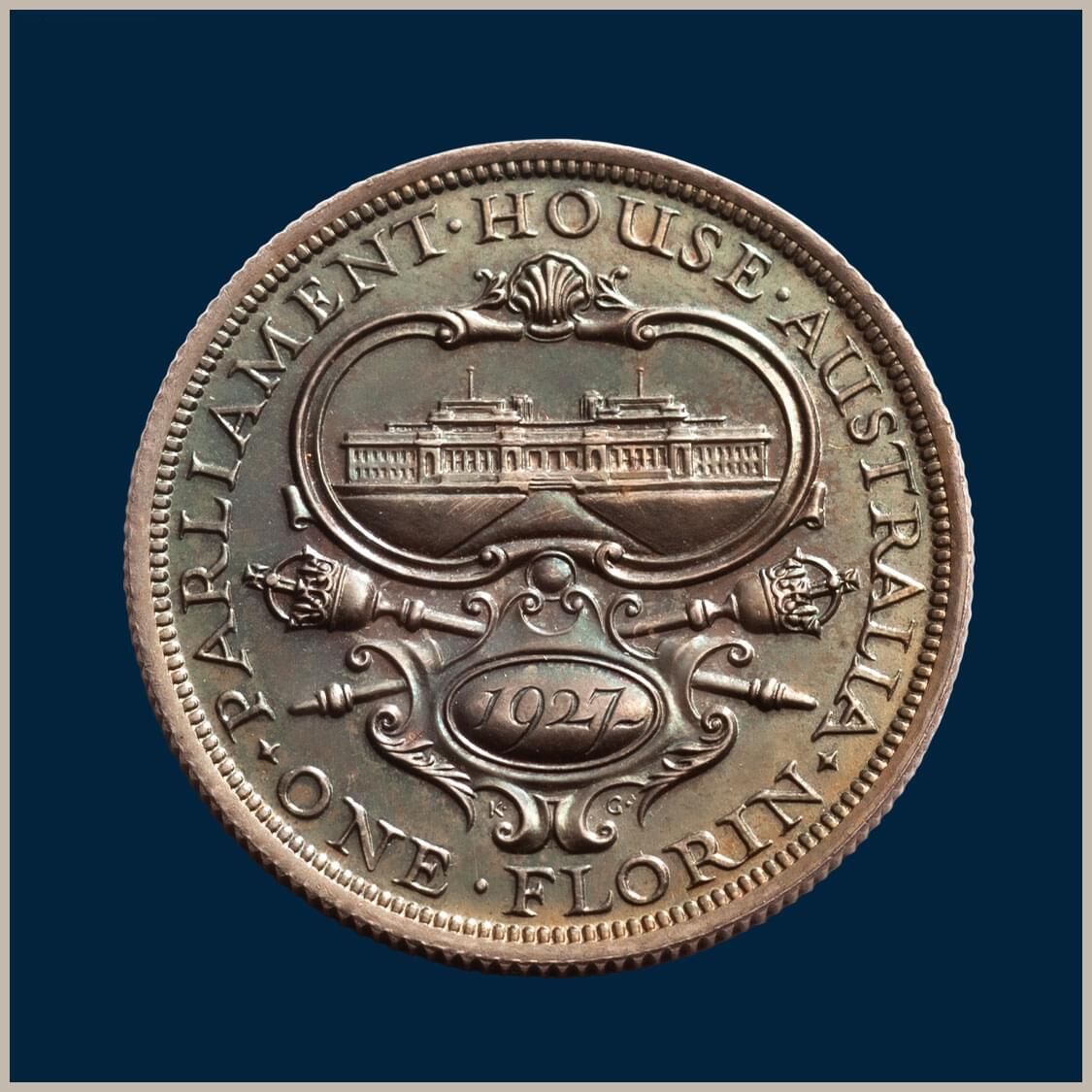
1927 Proof Canberra Florin
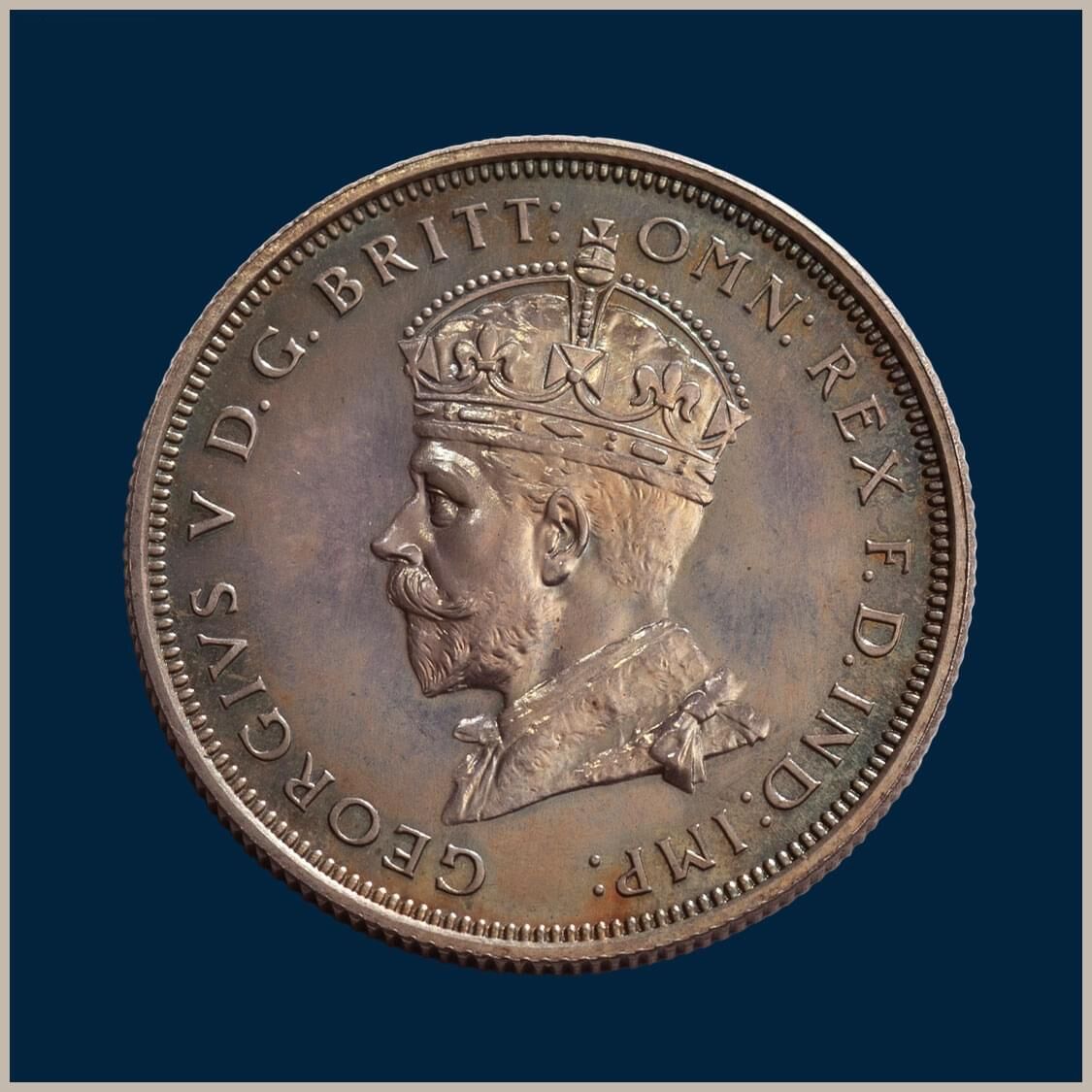
1927 Proof Canberra Florin
The Canberra Florin was minted for one of the most significant events in Australia’s journey to nationhood. The opening of the first Parliamentary buildings in the national capital, Canberra. For, while Federation occurred in 1901, Federal Parliament sat for twenty-six years in temporary accommodation in Victoria.
The opening of Parliament House in Canberra on 9 May 1927 was a big deal. Officiated by the Duke of York, who later became King George VI, the formal opening was broadcast to more than one million people via radio stations in Queensland, New South Wales, Victoria and South Australia.
Authorities around the world have used currency to send messages to their population from the year dot. Australia's Government took up the initiative and boasted its achievements by minting the celebratory 1927 Florin featuring the nation’s brand-new Parliamentary buildings.
The impending release of the Canberra Florin was announced in the newspapers as early as January of 1927.
Two million florins featuring Parliament House were struck by the Melbourne Mint on behalf of the Government and released into circulation through the banks. (The Australian population at the time was 6.5 million.)
The special nature of the occasion saw the Federal Government also authorise the Melbourne Mint to strike 400 Canberra Florins to PROOF quality and sell to the public as collector’s items for a premium over face value, 2/- 6d.
Two million circulating florins versus four hundred PROOF florins … that is a vast difference in numbers. And the key to the disparity in values between circulating examples and PROOF coins.
What is a ‘PROOF’ coin? And how does it differ from a circulating coin?
Coins are struck in two different styles and for two distinctly different purposes. And they have been for centuries in mints right around the globe.
Coins are struck so that they can be used in every-day transactions. We call it circulating currency - coins that circulate – and, in the case of the Canberra Florin, two million coins were struck and released into circulation. Circulating coins are mass-produced in what can only be described as a factory environment and distributed through the banks at their face value.
Coins can also be struck to PROOF quality. A PROOF coin is a specially made coin distinguished by sharpness of detail and usually with a brilliant mirror-like surface. A PROOF coin is never intended to be used. It is a collector’s item
Proof coins are struck in highly controlled environments. The production is a painstakingly slow process. Coin blanks are hand-selected and they are polished to achieve a smooth mirror shine. The dies are also specially prepared to ensure the design is perfectly executed and crisp. Because the process is arduous, proof coins are always struck in limited numbers.
The Melbourne Mint struck 400 Canberra Florins to a proof finish and sold them to the public for a sixpence premium over its face value, the premium to cover production costs.
The confusing part for the novice is that the 1927 Proof Canberra Florin looks, essentially, the same as the coin struck for circulation. They share the same design and both coins are made from sterling silver. But there is a vast difference in the way in which they are produced. And the final product.
The tell-tale signs of a PROOF Canberra Florin.
There are some tell-tale signs that may assist you in the identification of a PROOF Canberra Florin. But a word of warning. PROOF coins must be sensitively handled and holding them in your hand may ultimately impact negatively on their delicate surfaces. With a consequential impact on their value.
So, if you are struggling to know how to handle the coin and find those tell-tale marks, take your coin into your local coin dealer.
Consider the date-side of a Canberra Florin and inspect the coin under a magnifying glass. If it is a PROOF, there will be raised lines between the oval encasing the date 1927 and the ONE in the legend. The novice will class them as scratches. A professional will refer to them as striations. Turn the coin over and there also is extensive raised lines (striations) in the fields in front of, and behind, the portrait of George V.
PROOF coins are the product of extensive die preparation. Those lines might look like scratches, and we are not talking about the scratch marks or gouges that come from circulation.
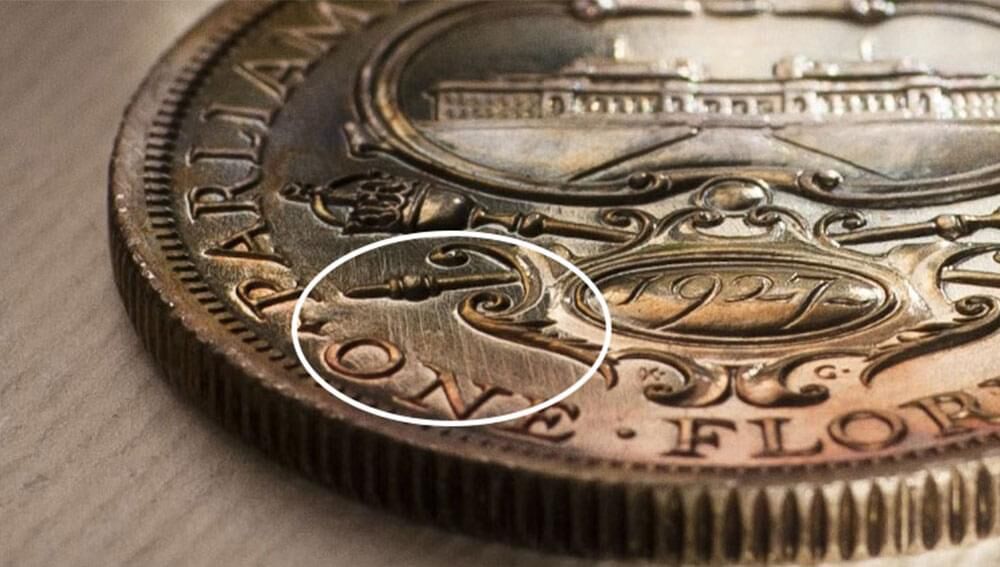
The striations are the clear evidence that the Melbourne Mint manually brushed the dies, and in so doing created scoring marks in the dies; marks that were replicated onto the coins during the minting process as raised lines.
In the main, the PROOF Canberra Florin has the tell-tale raised lines in the positions described above.
Why the vast price disparity between a PROOF Canberra Florin and a circulating example?
The huge disparity in values between a PROOF Canberra Florin and a circulating example simply relates to the numbers struck. And their availability to today’s collector market. How easy is it for a collector to lay their hands on an example.
The Melbourne Mint struck only 400 limited edition PROOF coins for collectors. And two million circulating coins.
Not only was the mintage of circulating florins substantial, the sentiment at the time was to hoard them as a keepsake. It may be harsh, but it is true that Canberra Florins that were struck for circulation are readily available.
On the other hand, PROOF Canberra Florins are exceedingly scarce. While the Melbourne Mint planned to sell 400 coins, it is believed that the mintage did not sell out, with the unsold coins melted down. Historians suggest a figure of 150 to 200 is closer to the mark.
Two points are clear when you analyse auction realisations of the PROOF 1927 Canberra Florin over the last fifty years.
The first point is that the coin is extremely scarce. On average, one Proof Canberra Florin appears at auction annually.
The second point we noticed was that the coin has enjoyed solid price growth. In the 1980s, a Proof 1927 Canberra Florin was selling for approximately $1000 at auction. By the 1990s, the coin had doubled in price.
The turn of the century saw the Proof Canberra Florin move to $6000. A rapid expansion of the rare coin market, a consequence of the 2000 Sydney Olympics coining program, saw prices on exceptional quality examples exceed $20,000.
Collectors that acquire a Proof 1927 Canberra Florin do so because they value the historical importance of the coin.
Collectors also enjoy the splendour of its design. And appreciate the value that the coin offers from a price / rarity perspective.
And they look to the future in the knowledge that, given its appeal and its very limited availability, the coin will increase in value.
The 1927 Proof Canberra Florin
If we asked a collectorn to name the top five all-time favourite Australian rare coins, without doubt the 1930 Penny would be at the top of the list.
But, the 1927 Proof Canberra Florin would, in all likelihood, be at position number two.
It is a coin that resonates with all Australians and for many collectors it's not a matter of 'if' I will buy a Proof Canberra Florin, it's 'when' I will buy one.
And it is rare. Numismatic authority Greg McDonald contends that the intended mintage of 400 was too optimistic for the size of the collector market at the time. And non-collectors baulked at having to pay a premium over face value! The coins that did not sell were melted down, the mintage believed to be as low as 150.
An explanation as to why so 1927 Proof Canberra Florins appear on the market.
Shop Coinworks
© Copyright: Coinworks
